

Data-driven leadership
NAST strives to be a data-driven association led by the needs of its members. Whether collecting data through our membership database, strategically surveying our members, querying members via the list serves, conducting post-conference evaluations, and then analyzing and compiling these results, NAST remains committed to working on behalf of its members.
NAST is continuously updating and improving our reports and other materials. Click on the topics below to see the results.
Explore current research and reports
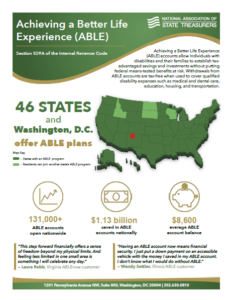
46 states and the District of Columbia have launched ABLE program with more than 100,000 accounts averaging $8,600 in savings for a total of $1.13 billion invested nationally.
Learn the basics of ABLE with this infographic.
For additional information, see the Advocacy page for more information.
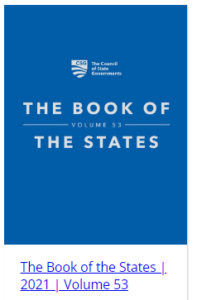 Published by the Council of State Governments, The Book of the States has been the reference tool of choice since 1935, providing relevant, accurate and timely information, answers and comparisons for all 56 states, commonwealths and territories of the United States. The reports collect information about all of the state executive branches, including Treasurers.
Published by the Council of State Governments, The Book of the States has been the reference tool of choice since 1935, providing relevant, accurate and timely information, answers and comparisons for all 56 states, commonwealths and territories of the United States. The reports collect information about all of the state executive branches, including Treasurers.
The latest data for 2022 (volume 53) is available here, along with archived reports back to 1994.
Scroll to the Treasurers’ section for the following topics:
- State Administrative Officials: Selection and Annual Salaries (Table 4.10-4.11 Pages 126-134)
- The Treasurers and Other Chief Financial Officers (Table 4.24 Page 169), includes information on method of selection, terms of position, dates of service, and term limits.
- Qualifications for the Office (Table 4.25 Page 1171), such as age, citizenship, residency, and voter registration.
- Responsibilities of the Treasurer’s Office (Table 4.26 Page 172), to find out what 15 functions a Treasurer’s office may perform.
Chapters include:
- State Constitutions
- Federalism and Intergovernmental Relations
- State Legislative Branch
- State Executive Branch
- State Judicial Branch
- Elections
- State Finance
- State Management, Administration and Demographics (includes Employment and Payrolls of State Governments by Function Pages 399-404)
- Selected State Policies and Programs
- State Pages
The 2012 State Treasurer Activities and Functions (STAF) data can be found here, the last time this report was conducted.
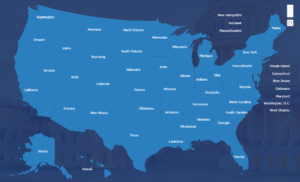
NAST has made a commitment to offer State Treasurers a comprehensive set of materials on how to start a financial literacy program and to provide the basic materials necessary to promote and publicize the initiative.
State Treasurers’ Annual Census, state-by-state descriptions of financial educational programs. Click on your state, or others, to see how you are doing. Please contact NAST for updates to your state’s page.
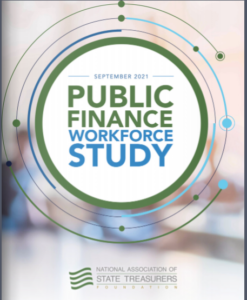 Released September, 2021, this groundbreaking report answers our questions and challenges our assumptions about the public finance sector workforce a the state, county and city level.
Released September, 2021, this groundbreaking report answers our questions and challenges our assumptions about the public finance sector workforce a the state, county and city level.
Read the entire report here.
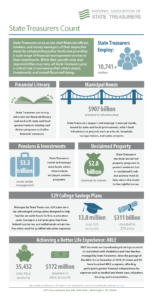 State Treasurers’ Count is an infographic detailing the impact of each Treasury office with stats on staffing, assets under management, investments in bonds and pensions, investments in college savings and ABLE plans, and returned unclaimed property.
State Treasurers’ Count is an infographic detailing the impact of each Treasury office with stats on staffing, assets under management, investments in bonds and pensions, investments in college savings and ABLE plans, and returned unclaimed property.
Here are the core functions for most US Treasury offices:
- Banking operations and cash management of both receipts and disbursements
- Administration and investment of public employee retirement funds and deferred compensation funds
- Coordinating the bonding activity for general obligation bonds, revenue bonds, short-term debt and public works projects
- Management of Local Government Investment Pools that assist communities in diversifying their portfolios to obtain a higher rate of return
- Financing for economic development
- Administration of college savings programs that enable millions of Americans to save for education expenses
- Administration of unclaimed property programs that return hundreds of millions of dollars each year to millions of rightful owners

